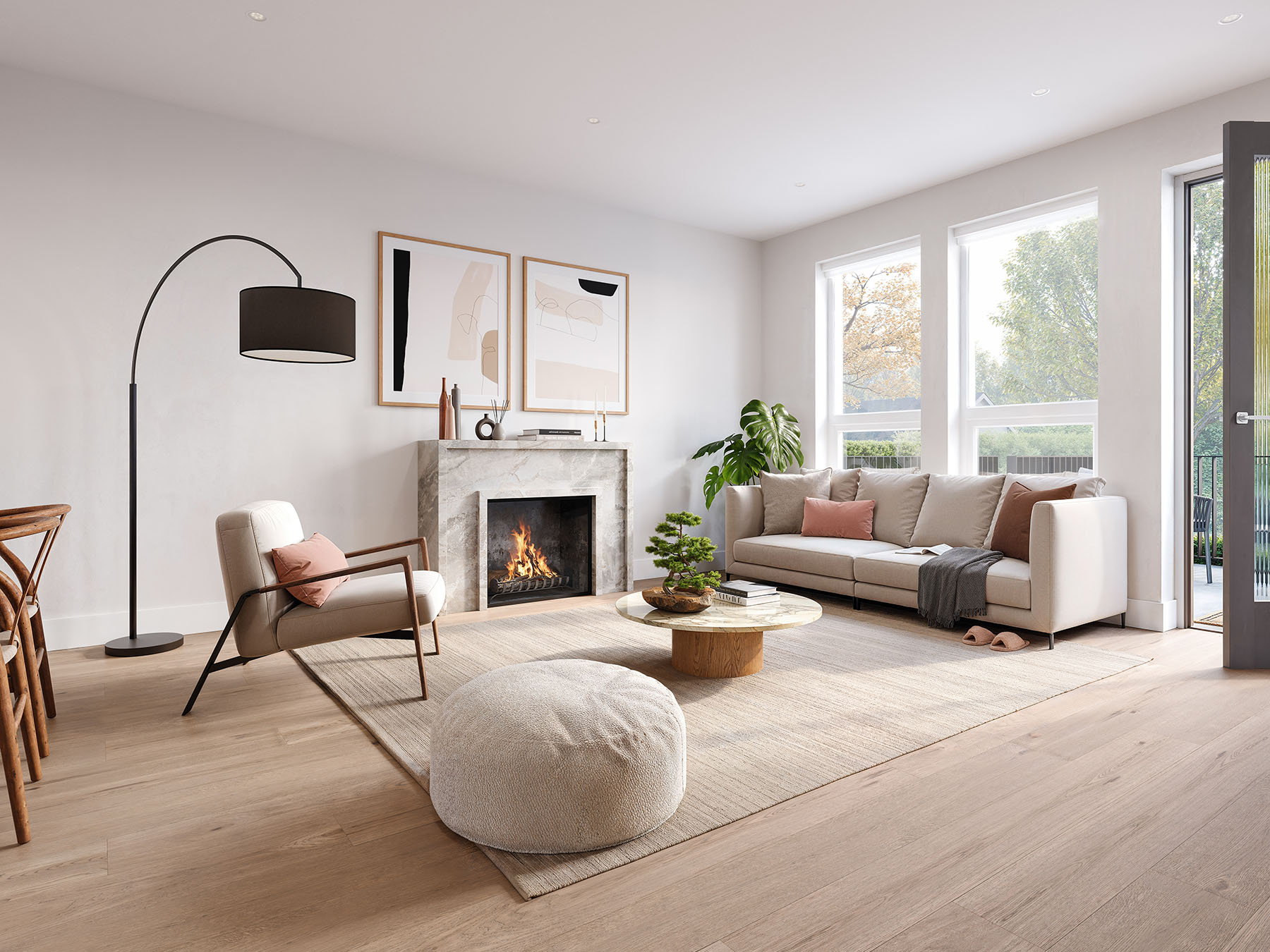3D Rendering Techniques in Interior Design

3d rendering interior design – 3D rendering techniques play a crucial role in interior design, allowing designers to create realistic and immersive visualizations of their projects. These techniques enable designers to explore different design options, materials, and lighting conditions before implementing them in the physical space.
Various 3D rendering techniques are used in interior design, each with its advantages and disadvantages. The choice of technique depends on factors such as the desired level of realism, rendering time, and hardware requirements.
Ray Tracing
Ray tracing is a technique that simulates the way light interacts with objects in a scene. It traces the path of light rays as they bounce off surfaces, casting shadows and creating realistic reflections. Ray tracing produces highly detailed and realistic images but can be computationally intensive, requiring specialized hardware or long rendering times.
Path Tracing
Path tracing is a variant of ray tracing that incorporates Monte Carlo sampling to improve the accuracy and realism of rendered images. It simulates the random paths of light particles as they travel through a scene, resulting in more accurate lighting and global illumination. Path tracing is more computationally expensive than ray tracing but produces higher-quality images.
Radiosity, 3d rendering interior design
Radiosity is a technique that calculates the distribution of light within a scene by simulating the transfer of energy between surfaces. It considers the way light bounces off and illuminates different surfaces, creating realistic lighting and shadows. Radiosity produces accurate and soft lighting but can be computationally expensive, especially for complex scenes.
Software and Tools for 3D Rendering in Interior Design: 3d Rendering Interior Design

The realm of 3D rendering in interior design is a technological landscape brimming with software and tools, each vying for the attention of designers seeking to create captivating and immersive virtual spaces. From industry stalwarts like 3ds Max and Maya to open-source powerhouses like Blender, the choice of software can significantly impact the outcome of a project.
Modeling, Texturing, and Lighting
At the heart of 3D rendering lies the intricate process of modeling, texturing, and lighting. Modeling involves the creation of 3D objects that form the foundation of the virtual environment. Texturing breathes life into these objects, applying colors, patterns, and materials to enhance their realism. Lighting, the unsung hero of rendering, plays a pivotal role in setting the mood, creating shadows, and highlighting focal points.
- 3ds Max: A comprehensive software suite renowned for its robust modeling, animation, and rendering capabilities. Its user-friendly interface and vast library of plugins make it a favorite among professionals.
- Maya: Another industry-leading software, Maya excels in creating complex 3D models and animations. Its powerful rendering engine allows for realistic lighting and material effects, making it ideal for high-end visualization projects.
- Blender: An open-source software that has gained immense popularity in recent years. Blender boasts a comprehensive set of modeling, texturing, and rendering tools, making it a versatile choice for both beginners and experienced designers.
Choosing the Right Software
The choice of software ultimately depends on the specific project requirements and the skill level of the designer. For complex projects that demand intricate modeling and realistic rendering, 3ds Max or Maya might be the ideal choice. However, for smaller projects or designers new to 3D rendering, Blender offers a compelling combination of affordability and functionality.
Applications of 3D Rendering in Interior Design

3D rendering has become an indispensable tool in interior design, offering a multitude of practical applications that enhance the design process and communication with clients.
Space Planning
3D renderings enable designers to visualize and plan the spatial layout of a room or entire building. By creating a virtual model, designers can experiment with different arrangements of furniture, walls, and other elements to optimize space utilization and create a functional and aesthetically pleasing environment.
Furniture Placement
3D renderings allow designers to accurately place furniture and accessories within a space, ensuring that they fit harmoniously and create a cohesive design scheme. This helps avoid costly mistakes during the construction or renovation process, as designers can foresee any potential issues with scale, proportion, or functionality.
Lighting Design
3D renderings are invaluable for lighting design, as they allow designers to simulate different lighting scenarios and assess the impact of natural and artificial light on the space. By adjusting the intensity, color, and direction of light sources, designers can create optimal lighting conditions that enhance the ambiance and functionality of the interior.
Communication with Clients
3D renderings serve as a powerful communication tool between designers and clients. By providing realistic and immersive visualizations, designers can convey their ideas clearly and effectively, enabling clients to understand the design concept and make informed decisions. This reduces the risk of misunderstandings and ensures that the final design meets the client’s expectations.
Marketing and Sales
3D renderings have become essential for marketing and sales in interior design. Virtual tours and interactive presentations allow potential clients to experience a space before it is built, creating excitement and generating interest in the design. These visualizations can be shared online, through social media, and in print materials to attract new clients and showcase the designer’s capabilities.